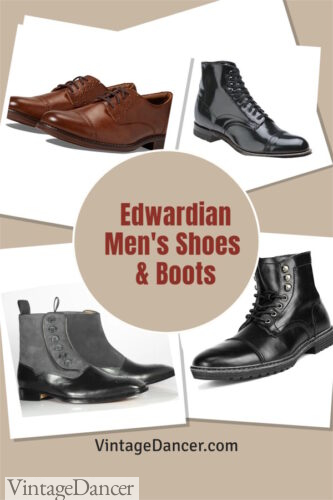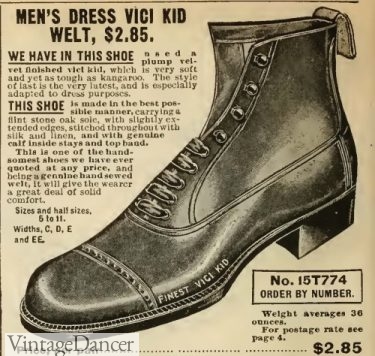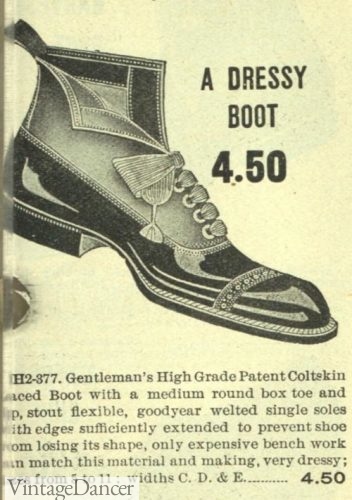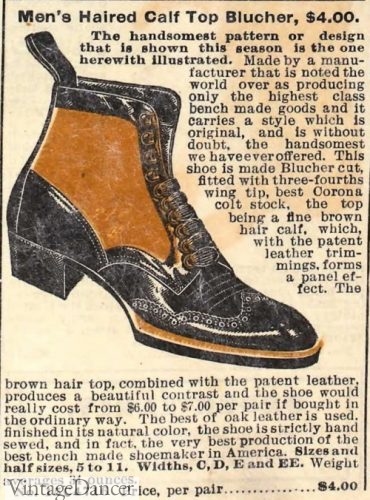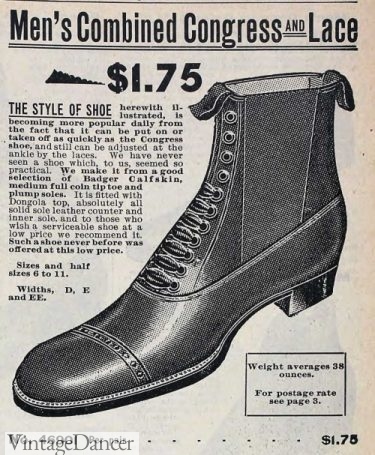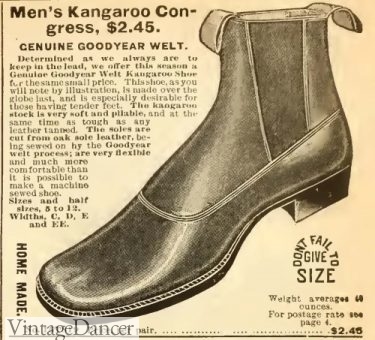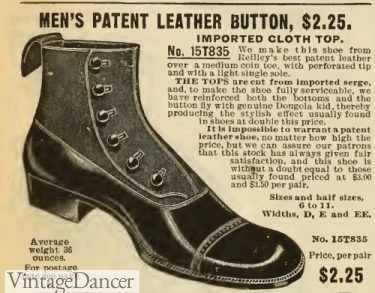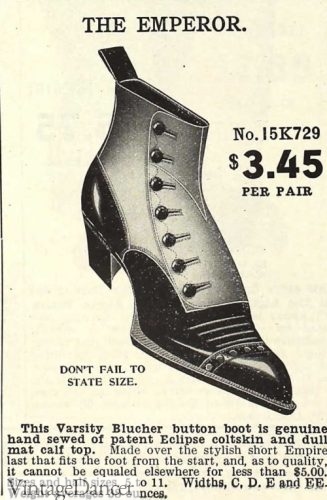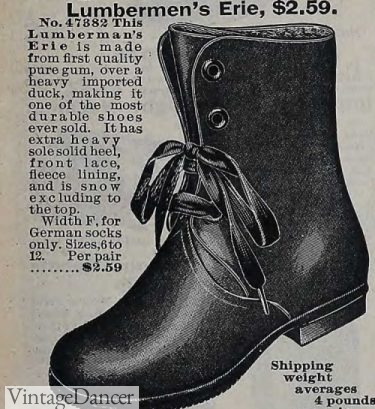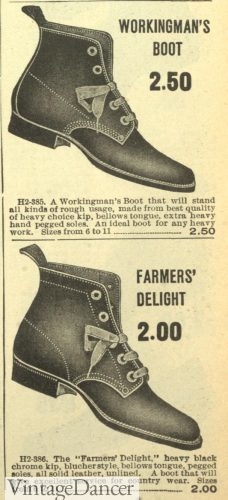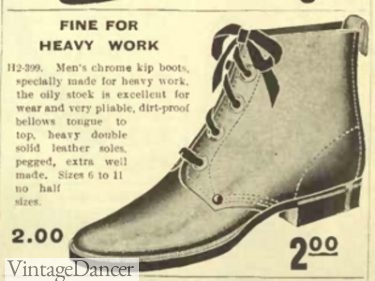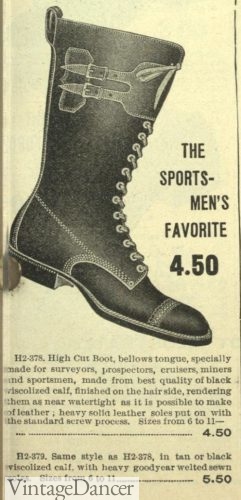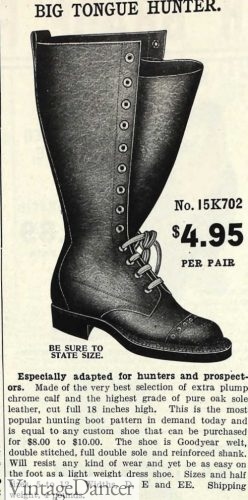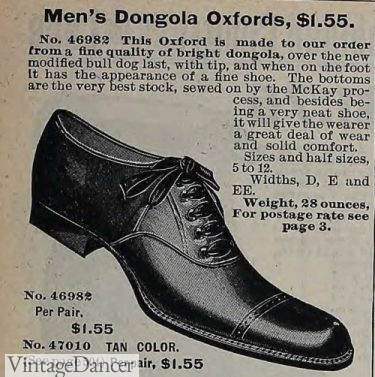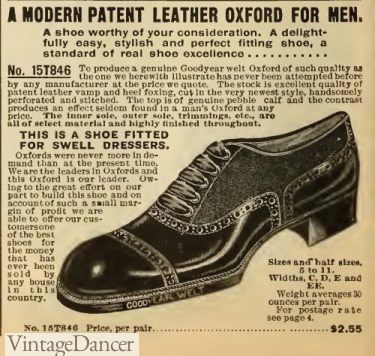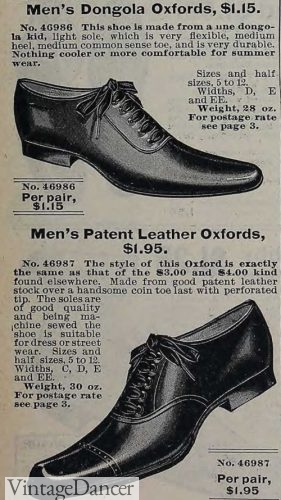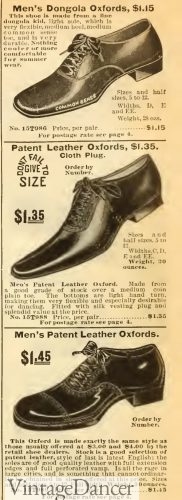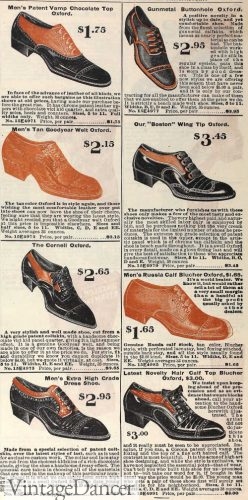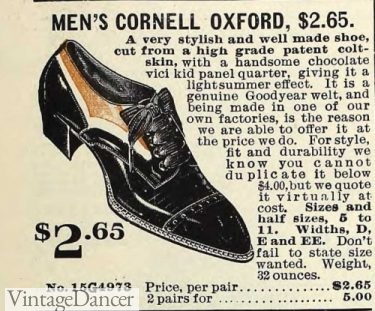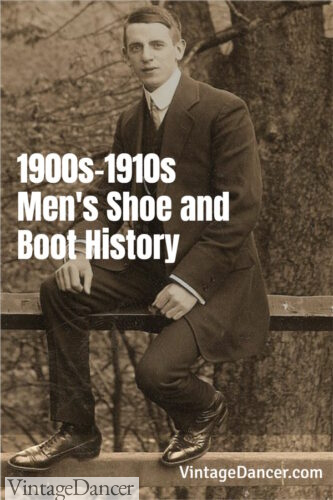
Men’s shoes at the turn of the century changed little from the Victorian era before. Starting around the Edwardian era in 1890 men’s shoes and boots were becoming more modern. By the 1910s more men were wearing low oxford shoes than dress boots.
Men’s lace up boots remained every man’s day shoe in the 1900s, regardless of working class or gentlemen status. However all classes had their own style variations, materials, and color preferences. As more leisure pursuits opened up for men, the short lace up Oxford shoe grew in popularity with the upper classes.
New changes to men’s Edwardian footwear were: Cuban or military heels replaced the Victorian stacked heel, and the heel was 1.25 to 1/5 inches. Pull tabs were placed on the back of boots to help prevent wrinkles in the shaft, and laces were wide and flat.
Skip the history and buy men’s Edwardian style shoes and boots.
Edwardian Men’s Boots
The lace up ankle boot with a smooth or cap toe in black was the most common style of 1900s footwear for men. To make them, two tones of black or two skin types were often combined for a variety of texture and tonal color. Leather was made from colt (horse), kangaroo, and calfskin.
Gentlemen with more flare to their style could opt for fabric top boots (wool or satin), canvas boots, and two color boots (brown and black, grey and black, or cream and brown). Tan boots could be worn in summer in the country, but never in the city.
- 1902 Cap Toe Lace-Up Boot
- 1907 Black and Grey Dress Boot with Cap Toe
- 1905 Brown and Black Two Tone Boots
- 1910 Men’s Dress Boots
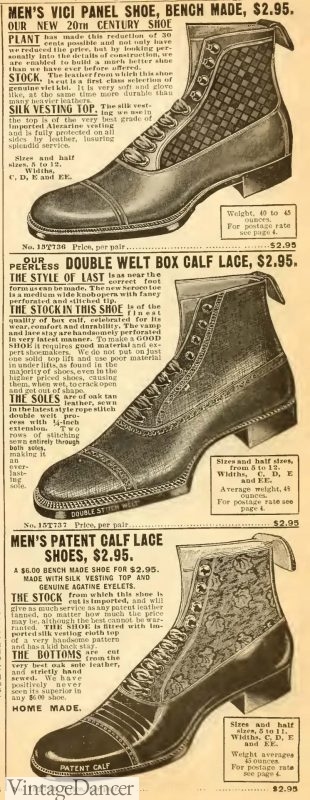
1902 Fancy Silk Fabric Top Boots
The pull-on Congress boot was another popular style of 1900s boot for men who didn’t want the fuss of tying laces. Elastic side panels on either side made these boots easy to slip on. Boots with both laces and elastic side panels were also offered. Many decade later these would be called Chelsea boots.
- 1900 Lace-Up Congress Boots
- 1902 Pull-On Congress Boot
The spat top boot with a row of buttons on the sides were very popular going into the 1900s, but quickly faded. However, they never left men’s footwear offerings.
Many older men as well as dapper young men opted to keep the style alive. After 1910, men’s side button boots would come back in fashion among the young and trendy.
- 1902 Wool Top and Patent Leather Button Boots
- 1908 Black Leather (Matte Top, Patent Bottom) Button Boots
Men’s 1900s Work Boots
Working class men also wore lace up boots, although the overall shape was less refined than that of men’s dress shoes. Sturdier and more flexible materials, thicker laces spaced out further, a wide bellow tongue, and rubber soles were features of Edwardian men’s work boots.
Every job had its own style of work boot for every season. All-rubber boot or oil coated boots and shoes were worn in wet climates. Over-the-calf boots were ideal for walking in difficult terrain. Felt boots were warm and flexible for mountain logging. These are just of a few of the basic work boots.
- 1900 Lumberman’s Boot (Gum Rubber Coated Duck Cloth)
- 1902 Felt and Rubber Boot
- 1907 Work Boots
- 1909 Men’s Work Boots
- Buckle-Top Tall Boots for Sport or Work
- Lace-Up Tall Boots for Work or Hunting
Learn more about men’s winter/snow boots here.
Oxford Shoes
The Oxford shoe, while not a new invention, found new purpose in the Edwardian era. Previously, it had been reserved as a sport or casual shoe (worn with summer suits/summer outfits). After 1900, it was being seen on the city street, especially when paired with short cropped and cuffed trousers.
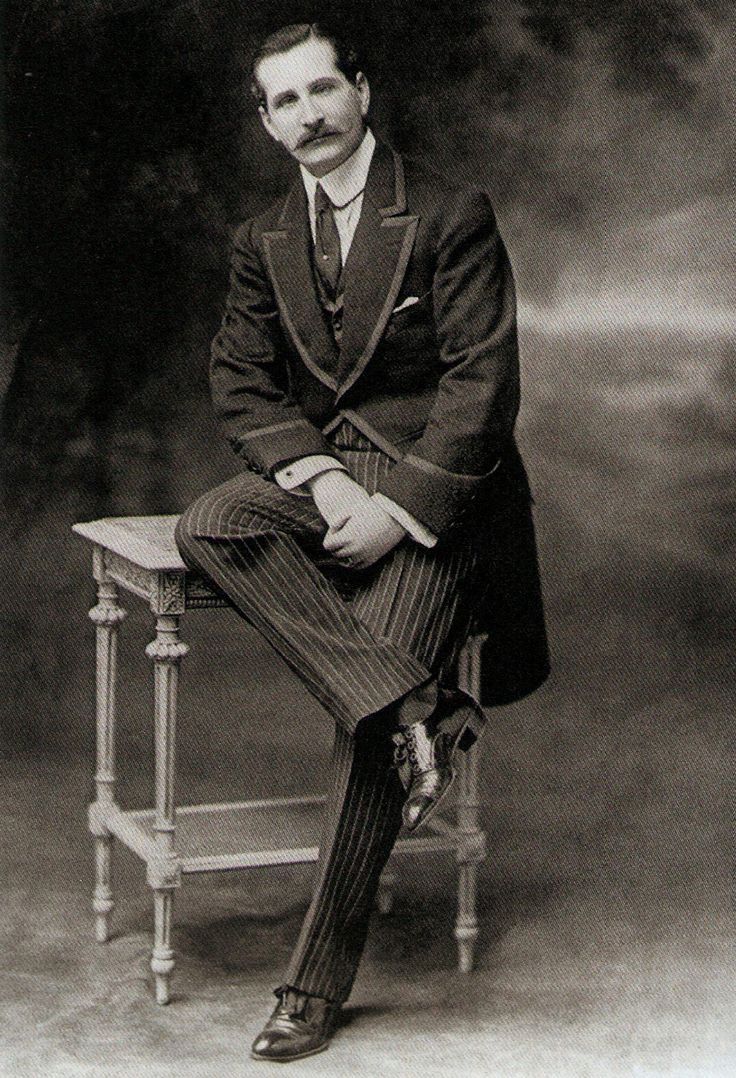
A Morning Suit paired with Oxford Shoes. Very dapper!
Men’s 1900s oxfords were either plain or (more often) cap toe with long round toes, or shorter round toes for a “sportier” effect. Patent leather look dressier than matte leathers.
Unlike the skinny string laces we use now, Oxfords in the 1900s featured wide flat ribbon laces that tied in a big bow. When paired with short trousers and colorful clocked socks, the look was very fancy and a touch feminine.
- 1900 Simple Cap Toe Oxford Shoe
- 1902 Short Cap Toe Patent Leather Oxfords
- 1900 Plain or Cap Toe Oxfords
- 1902 Smooth, Long-Toe Oxford Shoe
Men’s Oxford shoes were usually lace-up styles but could also be button or buckle tops. The two tone combinations with military heels and spade soles were leaders in the new wave of trendy men’s footwear. These odd shoe shapes and decorations were short lived, just like the rah rah suits they were worn with.
- 1906 brown an tan oxford shoes
- 1907 black and tan oxford shoes
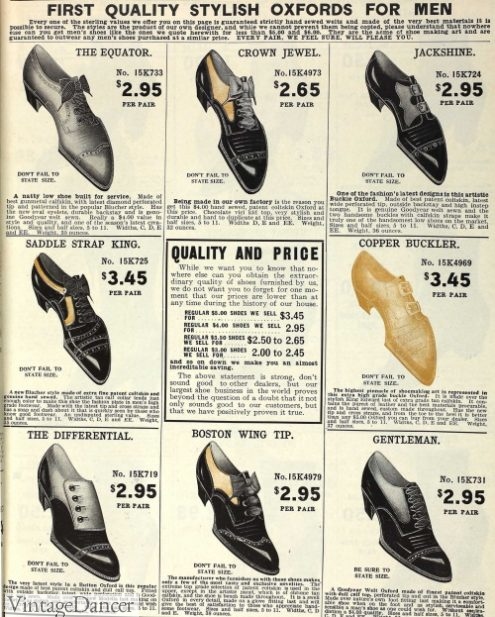
1908 Unique Oxford Shoes with Lace, Buckles, and Button Tops
Read More Men’s Fashion History
- History of Men’s Winter Boots
- 1900-1960s History of Men’s Socks
- Where to Buy 1900s and 1910s Men’s Clothing
- Men’s 1920s Shoes History and Buying Guide
Buy 1900s Men’s Shoes and Boots
Recreating men’s footwear of the 1900s isn’t very difficult now thanks to a revival of lace up boots. A basic pair of Oxfords is also period appropriate, although I would encourage you to change out the laces for ribbon.
These are some choices for dress boots, work boots, and Oxford shoes that are in the Edwardian style:
Buy Edwardian style men’s boots and shoes
Debbie Sessions has been teaching fashion history and helping people dress for vintage themed events since 2009. She has turned a hobby into VintageDancer.com with hundreds of well researched articles and hand picked links to vintage inspired clothing online. She aims to make dressing accurately (or not) an affordable option for all. Oh, and she dances too.
